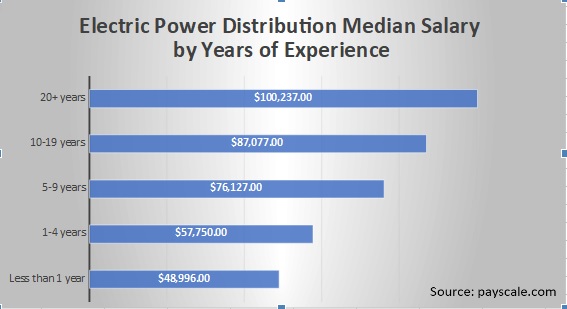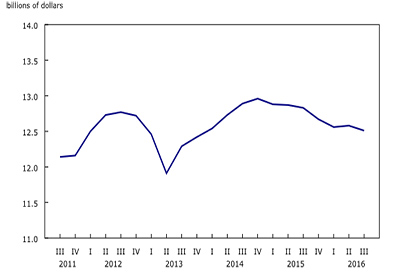Guide to the Canadian Electrical Code, Part I — Instalment 19

December 12, 2016
In this article: Section 34 — Signs and Outline Lighting. The CE Code is a comprehensive document. Sometimes it can seem quite daunting to quickly find the information you need. This series of articles provides a guide to help users find their way through this critical document. This is not intended to replace the notes in Appendix B or the explanations of individual requirements contained in the CEC Handbook, but will hopefully provide some help in navigating the code.
Rule 34-000 Scope — this is a supplementary or amendatory section of the code and applies to incandescent lamps, fluorescent lamps, high-voltage luminous discharge (cold-cathode or neon) tubes, high-intensity discharge lamps, and other light-emitting sources such as LEDs. The CEC Handbook has a good diagram of a typical sign installation.
Rule 34-002 denotes some special terminology that applies to this section: GTO sleeving, Neon supply and Sign.
General Requirements
Rule 34-100 requires that each sign and outline lighting system must have disconnecting means integral with it and located within sight and within 9 meters of it, or be capable of being locked in the open position.
Rule 34-102 requires that the disconnecting means and other control devices for transformers and ballasts must be approved for the purpose, or have a current rating not less than twice the rating of the neon supply, transformer or ballast.
Rule 34-104 specifies that thermally protected ballasts are required for all signs, and outline lighting with fluorescent lamps except for simple reactance type ballasts.
Rule 34-106 requires that signs, outline lighting and supports be located so that there is no contact, interference or proximity that can cause a hazard with overhead conductors and electrical and communications utility lines. In addition, a sign or outline lighting system, except for the support, must be a minimum of 2.2 meters above grade. This does not apply to free-standing signs, indoor signs and outline lighting installed in show windows and similar locations, providing they are approved for the location or have mechanical protection.
Rule 34-108 requires that poles, masts, standards or other devices used as electrical raceways must be approved for the purpose except when used for mechanical support only.
Rule 34-110 requires that all conductive non-current-carrying parts of a sign or outline lighting installation, except for small metal parts, metal wire ties securing neon tubing and systems supplied by a class 2 power supply, must be bonded to ground in accordance with Section 10 – Bonding and Grounding.
Rule 34-112 requires that sign leads that pass through the surfaces or partitions must be protected by non-combustible bushings.
Rule 34-114 specifies that fuseholders and flashers be enclosed and accessible without removing obstructions or dismantling the sign.
Enclosures
Rule 34-200 requires that neon supplies, switches, timers, relays, sequencing units and similar devices must be in suitable electrical enclosures (information on the construction of enclosures is contained in Appendix B).
Rule 34-202 requires that uninsulated parts that are accessible to authorized persons be protected by doors or covers with interlocks or require non-ordinary tools to open.
Neon supplies
Rule 34-300 limits the rated secondary open-circuit voltage of a neon supply to 15000 v and 7500 volts-to-ground.
Rule 34-302 requires secondary-circuit ground fault protection on neon supplies, except for
- transformers with isolated secondaries and maximum open-circuit voltage of 6000v between leads or terminals, and
- integral glass or porcelain secondary tube housing with no secondary circuit field wiring.
Rule 34-304 limits open-type and core-and-coil type transformers to dry locations only.
Rule 34-306 requires that neon supplies used or installed in damp or wet locations as defined in Section 0 – Definitions must be wet or damp type as per 2-024 and 2-400.
Rule 34-308 governs the installation of neon supplies and requires that they are installed in locations that are accessible, capable of being removed or replaced, and rigidly secured. In an attic, bulkhead or similar location, an access door measuring not less than 900mm high by 600mm wide, and a 300mm wide permanent walkway to each component, must be provided.
Rule 34-310 specifies that the rating of overcurrent devices protecting neon supplies be a maximum of 30 amps or as per Rule 8-104 for two or more supplies, and must be of the weatherproof type if exposed to the weather. Any additional overcurrent devices may be placed inside or outside the sign structure.
Rule 34-312 notes that high-voltage outputs of neon supplies may not be connected in parallel or series with the output of any other neon supply.
Wiring methods
Rule 34-400 provides extensive detailed requirements for the installation of high-voltage cables in accordance with the rules of Section 12 and Table 15 and includes:
- type and minimum sizes of raceways and cables
- minimum separation from combustible material
Rule 34-402 requires that high-voltage cables in show windows and similar locations must be
- enclosed in approved GTO sleeving
- have a minimum separation of 38mm form combustible and conducting material
- be located so as not subject to mechanical damage
- not used to support the sign
Rule 34-404 specifies that the length of high voltage cable from neon supplies shall be as short as practicable except not more than 6 meters installed in metal raceway, and 16 meters installed in non-metallic raceway.
Rule 34-406 requires that connection of high-voltage cables to neon tubing must be inaccessible to unauthorized persons, and made by an electrode receptacle or a connection in an enclosure, approved for the location, with minimum conductor insulation extensions of 100 mm for damp or wet locations and 65 mm for dry locations.
Rule 34-408 allows flexible metal and liquid-tight flexible metal conduit enclosing high-voltage cables between electrode receptacle assemblies and neon supplies to serve as the bonding means (conductor) for the metal electrode receptacle assembly, provided it terminates in a secure bonding connection (Rule 10-610). Where non-metallic conduit is used to enclose high-voltage cable, the bonding conductor must be installed exterior to the conduit and a minimum distance from conduits of 38 mm on installations operating at 100 Hz or less, 44 mm on installations operating at more than 100 Hz and not smaller than no. 12 AWG. The CEC Handbook has a good diagram of bonding for enclosures of high-voltage cable in non-metallic conduit for metal electrode assembly housing.
In the next installment, we will be discussing Section 36 – High-voltage Installations.
The source for this series of articles is the Canadian Electrical Code, Part I, published by CSA
William (Bill) Burr is the former Chair of the Canadian Advisory Council on Electrical Safety (CACES), former Director of Electrical and Elevator Safety for the Province of BC, and former Director of Electrical and Gas Standards Development and former Director of Conformity Assessment at CSA Group. Bill can be reached at Burr and Associates Consulting billburr@gmail.com.
















